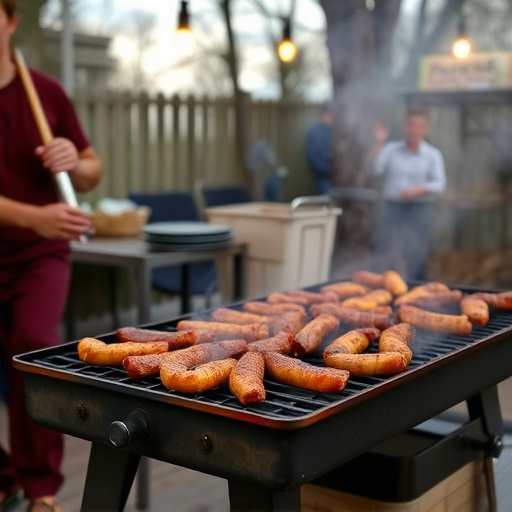Crafting the perfect Smoked BBQ Brisket Recipe requires understanding brisket anatomy, managing cooking temperature and times, dry brining, and mastering your smoker. Aim for 225°F – 250°F (107°C – 121°C) smoking temperatures, 1-1.5 hours per pound of brisket, and an internal temp of 165°F (74°C). Rest the meat for 1-2 hours post-cooking and slice against the grain. Accompany with sides like coleslaw, Potatoes au Gratin, or cornbread, and experiment with BBQ sauces for a memorable culinary experience.
Looking to master the art of smoking a perfect brisket at home? This comprehensive guide takes you through every step, from selecting the ideal cut to understanding brisket anatomy and mastering your smoker. Learn the secrets to dry brining for maximum flavor and achieving consistent, temperate heat for a tender, juicy result. With our detailed smoking time and temperature guide, you’ll be serving up a delicious smoked BBQ brisket that’s sure to impress. Pair it with the right sides and sauces for a true culinary experience.
- Choosing the Right Cut: Understanding Brisket Anatomy
- Dry Brining: Seasoning Your Brisket for Maximum Flavor
- Smoking 101: Setting Up and Mastering Your Smoker
- Temperate and Consistent Heat: The Key to Tender Brisket
- Smoking Time and Internal Temperature Guide
- Resting and Slicing: Completing Your Perfect Brisket
- Pairing Suggestions: Side Dishes and Sauces for Smoked BBQ Brisket
Choosing the Right Cut: Understanding Brisket Anatomy
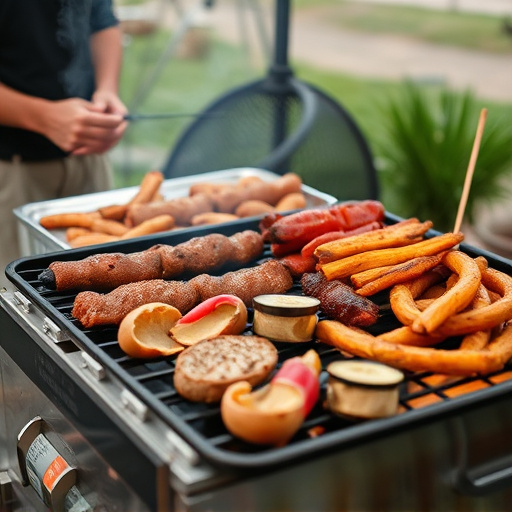
When it comes to crafting a perfect smoked BBQ brisket recipe, choosing the right cut is paramount. The brisket is a complex piece of meat with distinct sections, each offering unique characteristics. It’s typically composed of two muscles: the leaner, more tender “first cut” or “flat,” and the fattier, marbled “point.” For optimal results in your smoked BBQ brisket recipe, opt for a full packer brisket that includes both muscles. This combination ensures you get a rich, smoky flavor along with a juicy, tender texture.
Understanding brisket anatomy is key to navigating the cooking process. The fat cap on top of the meat acts as a natural protector during smoking, keeping the brisket moist and infused with flavor. As the brisket cooks, the fat renders, adding moisture and richness to the final product. Pay close attention to where the flat and point meet, known as the “seam.” This area tends to dry out faster, so it’s crucial to manage your smoking temperature and times accordingly in your smoked BBQ brisket recipe to ensure even cooking throughout.
Dry Brining: Seasoning Your Brisket for Maximum Flavor
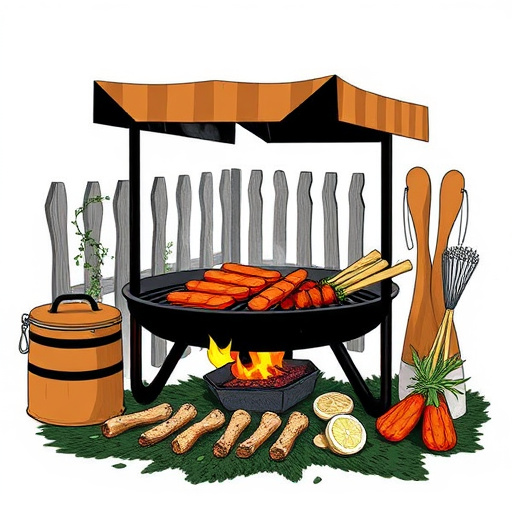
Dry brining is a key step in achieving the best-tasting smoked BBQ brisket recipe at home. It involves curing the meat with a coarse salt mixture, which helps to break down the muscle fibers, enhance flavor, and create a juicier end product. By applying a generous coating of your favorite smoking spice blend or a simple sea salt and pepper mix, you’re not only seasoning the brisket but also drawing out moisture, ensuring it remains tender during the long smoke session.
This brining process should be done well in advance, typically 1-3 days before cooking. The time allows the salt to work its magic, penetrating the meat’s fibers and intensifying the overall flavor profile. After dry brining, rinse the brisket to remove excess salt and pat it dry—a crucial step before smoking, as moisture will only steam off during the cooking process, not be absorbed back into the meat.
Smoking 101: Setting Up and Mastering Your Smoker
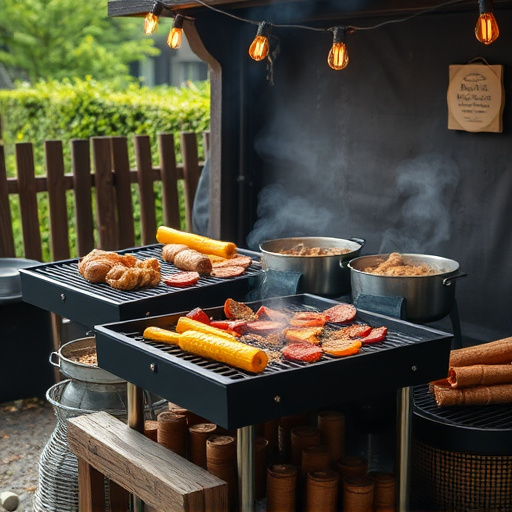
Smoking 101: Setting Up and Mastering Your Smoker
To craft the perfect smoked brisket at home, understanding your smoker is key. Whether you opt for a traditional offset smoker or a modern electric model, the setup and mastery of temperature control are fundamental to success. Begin by ensuring your smoker is clean and properly seasoned, allowing it to retain heat effectively while preventing food from sticking. Fill your smoker with high-quality smoking wood chips, such as oak or hickory, to infuse your brisket with robust flavors that define a classic Smoked BBQ Brisket Recipe.
Mastering the art of smoking involves finding and maintaining the ideal temperature range—typically between 225°F to 250°F (107°C to 121°C). This slow, low-and-steady cooking method allows the brisket’s natural juices to stay locked in, resulting in tender, succulent meat. Regularly monitor your smoker’s temperature using a reliable thermometer and adjust as needed by adding more wood or closing vents to maintain consistency throughout the hours-long smoking process.
Temperate and Consistent Heat: The Key to Tender Brisket
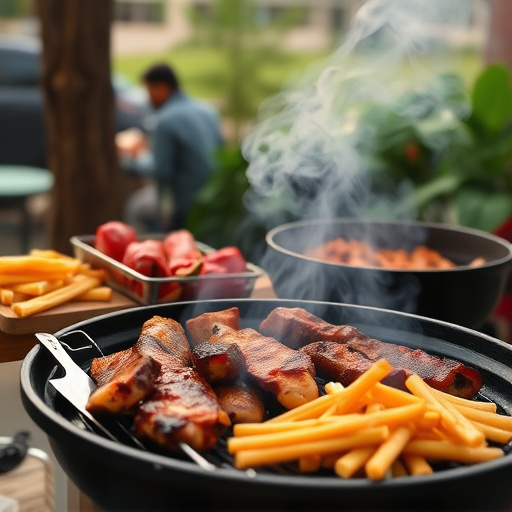
Achieving the perfect smoked brisket requires a delicate balance, and one of the most critical aspects is maintaining temperate and consistent heat throughout the cooking process. This ensures that your brisket cooks evenly, resulting in tender, flavorful meat. The ideal temperature range for smoking BBQ brisket is between 225°F to 250°F (107°C to 121°C). Using a reliable smoker with good temperature control will help you maintain this range.
A slow and steady cooking process allows the heat to penetrate deep into the meat, breaking down tough connective tissues and collagen. This transformation leads to a melt-in-your-mouth texture that is the hallmark of a perfect brisket. So, be patient and let the low and consistent heat do its magic as you enjoy the aromatic journey towards your mouthwatering smoked BBQ brisket recipe.
Smoking Time and Internal Temperature Guide
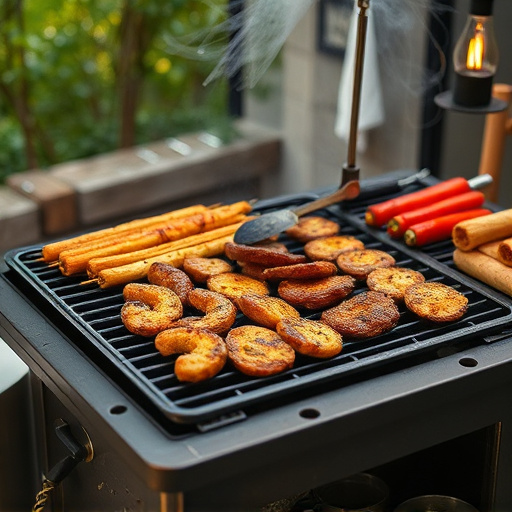
Smoking brisket to perfection at home is an art that takes time and precision. The key to a delicious smoked BBQ brisket recipe lies in understanding the smoking time and internal temperature guide. Generally, brisket is ready after 1 to 1.5 hours per pound when cooked at temperatures between 225°F – 250°F (approximately 107°C – 121°C). For a 10-pound cut, this translates to 10-15 hours of slow smoking.
The internal temperature should be monitored closely using a meat thermometer. Brisket is considered fully cooked and ready to slice when the internal temperature reaches 165°F (74°C). At this point, the magic happens—the collagen in the meat begins to convert to gelatin, making the brisket incredibly tender and juicy. Remember, slow and steady wins the race; allowing the brisket to rest for at least an hour after reaching the desired internal temperature ensures maximum flavor infusion and juiciness.
Resting and Slicing: Completing Your Perfect Brisket
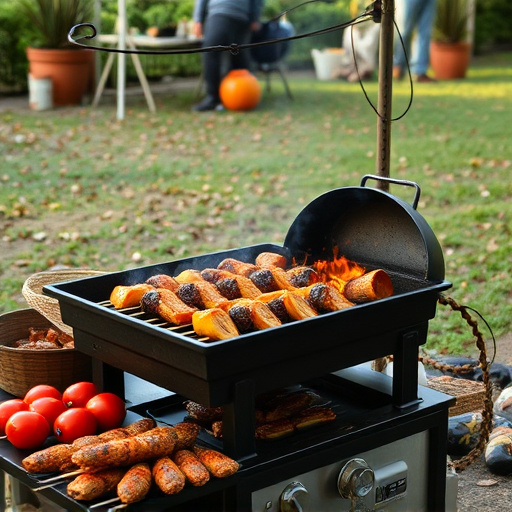
After carefully smoking your brisket to perfection, the next crucial step in achieving a truly exceptional smoked BBQ brisket recipe is resting and slicing. Once cooked, transfer your brisket to a clean, flat surface and let it rest undisturbed for at least 1-2 hours. This resting period allows the juices to redistribute throughout the meat, ensuring that every bite is moist and flavorful.
When ready, slice your brisket against the grain. This technique ensures tender, thin slices that melt in your mouth. Start from one end and cut in even slices, being careful not to rush the process. Resting and slicing correctly can transform your smoked brisket into a culinary masterpiece, making it the star of any BBQ gathering or weeknight dinner.
Pairing Suggestions: Side Dishes and Sauces for Smoked BBQ Brisket
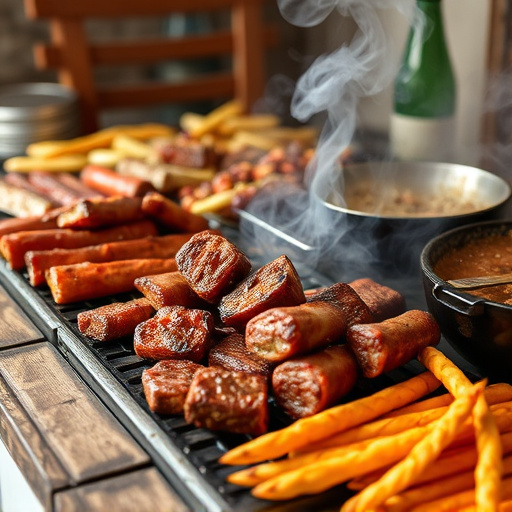
When it comes to completing your perfect smoked BBQ brisket recipe, the right sides and sauces can elevate your dish from good to great. For a classic pairing, consider a simple yet flavorful coleslaw that cuts through the richness of the meat. Potatoes au Gratin offers a comforting contrast, while cornbread adds a touch of home-style comfort.
For sauce, a traditional BBQ glaze made with ketchup, vinegar, brown sugar, and spices is hard to beat. A spicy kick can be achieved with a peppery sauce, while honey-mustard offers a sweet and tangy alternative. Experimenting with different combinations will help you find the perfect balance of flavors that satisfy your taste buds.
